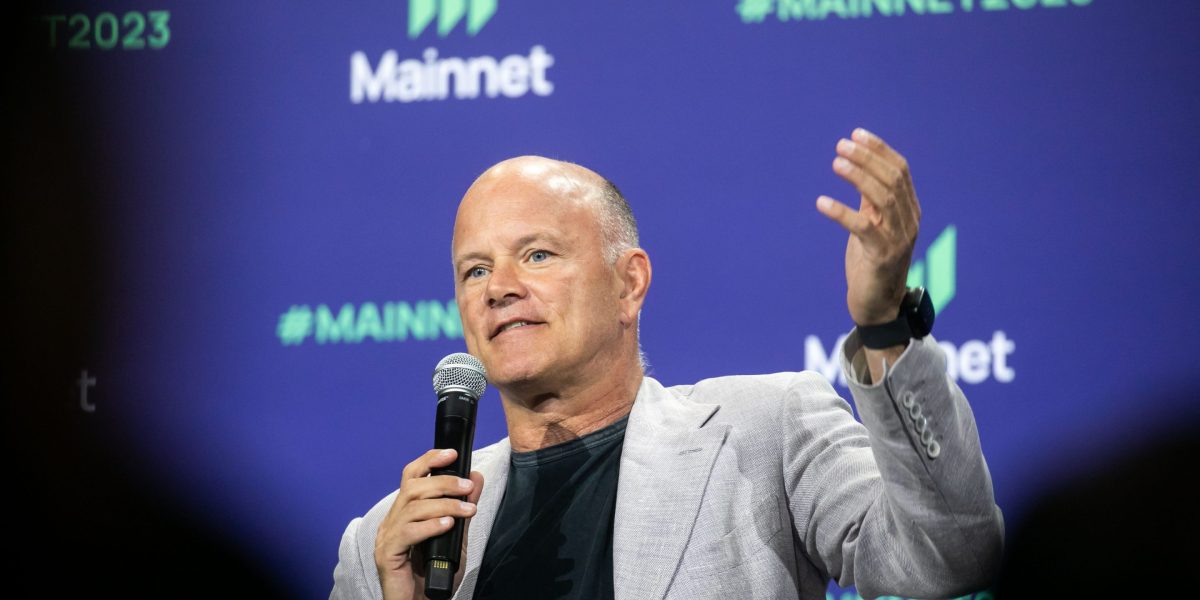- The Department of Government Efficiency may end after only 130 days, well before its original schedule, as Musk’s work at DOGE has become increasingly unpopular among some of the president’s constituents. “There will be a point at which the secretaries will be able to do this work and do it, as we say, with a scalpel,” Trump told reporters on Monday.
President Donald Trump may already be looking to pull the plug on Elon Musk’s controversial DOGE project just two months into his administration.
Speaking to reporters on Monday, Trump suggested his cabinet secretaries already have learned everything from the Tesla CEO they needed to boost efficiency.
Soon they would be in a position to remove the training wheels and steer their departments without the input from Musk, whose work at DOGE has become increasingly unpopular among some of the president’s constituents.
The president has had to defend DOGE cuts affecting voters in some Republican strongholds while simultaneously lobbying for steep tariff hikes—proposals that have dragged the stock market into the red and fueled recession fears.
Trump recently voiced some displeasure with Musk, demanding the Tesla CEO adopt a more surgical approach rather than wield a chainsaw, as he did onstage with fellow cost-cutter Argentine President Javier Milei.
“A lot of the people that are working with DOGE are the secretaries—you know, the heads of the various agencies—and they’ve learned a lot,” Trump said during a briefing in the Oval Office, adding some of his cabinet staff may try to retain a few of the leftover DOGE personnel advising them.
“There will be a point at which the secretaries will be able to do this work and do it, as we say, with a scalpel.”
Radically shrinking the government was the new ‘Manhattan Project’ for Republicans
The remarks came in response to a question about what may happen to DOGE once Musk’s term of service ends.
The world’s richest man is currently classified as a Special Government Employee and is limited to working no longer than 130 days out of the entire year; this distinction is important because SGEs benefit from laxer ethics and compliance rules than regular government employees.
If Trump uses Musk’s impending departure to pull the plug on DOGE entirely, it would bring the project to an end long before the envisioned cut-off date on July 4, 2026, when the country celebrates its 250th Independence Day—just before the 2026 mid-term election campaigning begins in earnest.
In November, Trump dubbed DOGE as nothing less than the “Manhattan Project of our time” when he first confirmed that Musk would join his administration to run the unofficial body named after the ticker symbol of Musk’s favorite crypto meme coin.
“Republican politicians have dreamed about the objectives of DOGE for a very long time,” Trump wrote of the effort to radically shrink the size of the federal government, initially by $2 trillion and later scaled down to $1 trillion.
Musk claims he’s on target to achieve $1 trillion in savings
Even before he assumed his role, Musk gave a sense of the pain to come when he penned a column in which he called for “mass headcount reductions” to the two million-strong federal workforce.
Many of the savings in waste and fraud he’s claimed to have unearthed have been disputed or debunked, including the famous example of a $50 million payment to send condoms to Hamas terrorists.
But it was his claim that the Social Security entitlement program—people’s retirement funds—was the “biggest ponzi scheme of all time” that appeared to most worry Americans.
In an effort to drum up support for their efforts, Musk appeared on Fox News with seven other senior assistants at DOGE last Thursday to dispute the wrecking ball-style characterization of their cuts.
“I think we will have accomplished most of the work required to reduce the deficit by a trillion dolllars worth in that time frame,” Musk said, asked about his 130-day term of office. “Our goal is to reduce the waste and fraud by $4 billion a day, every day, seven days a week—and so far we are succeeding.”
This story was originally featured on Fortune.com
Source link


 Entertainment8 years ago
Entertainment8 years ago
 Politics8 years ago
Politics8 years ago
 Entertainment8 years ago
Entertainment8 years ago
 Entertainment8 years ago
Entertainment8 years ago
 Tech8 years ago
Tech8 years ago
 Tech8 years ago
Tech8 years ago
 Tech8 years ago
Tech8 years ago
 Politics8 years ago
Politics8 years ago






